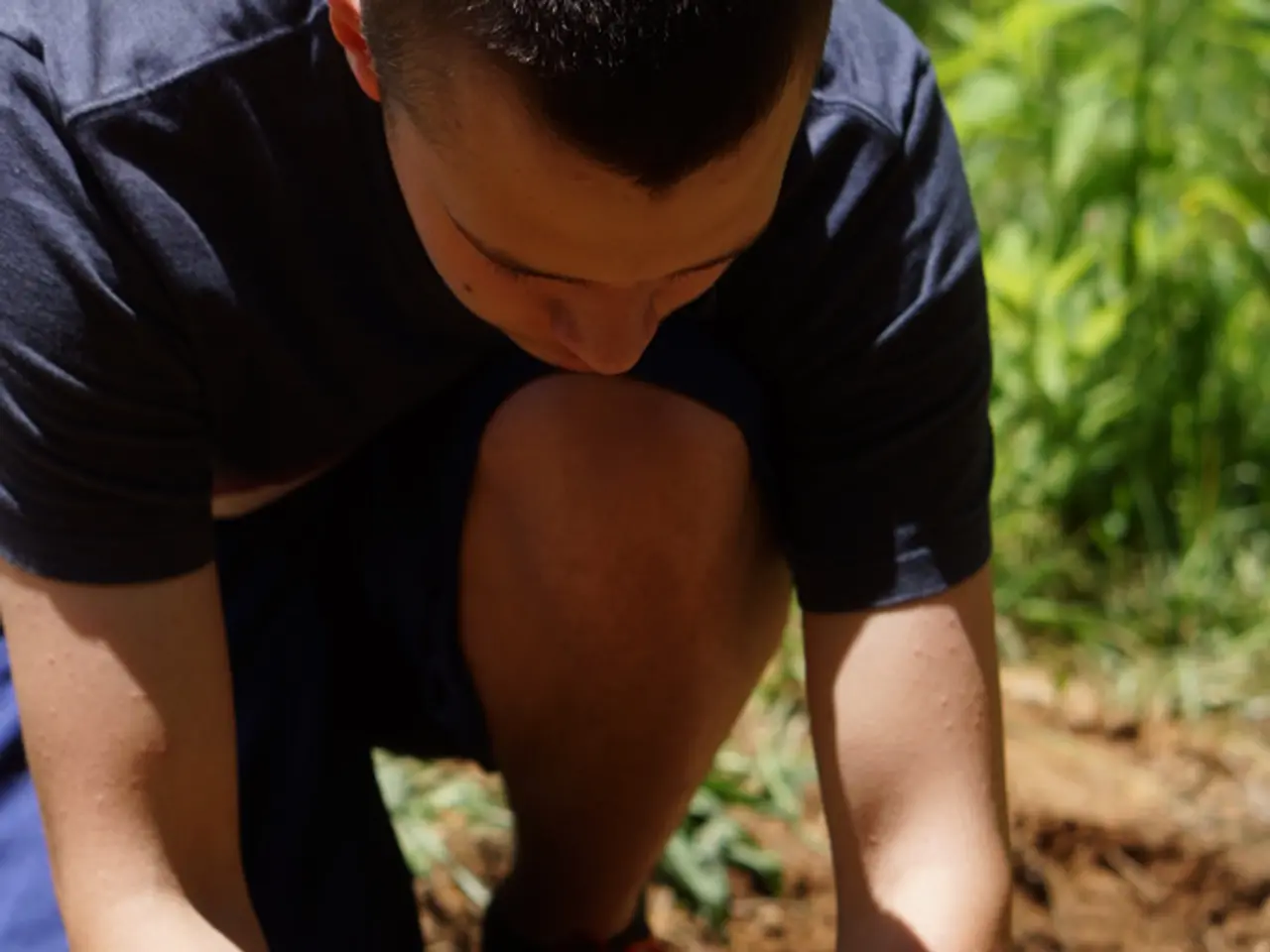Practical Equipment for Growing Herbs in Your Own Backyard
================================================
A well-tended herb garden can bring a touch of freshness and flavour to any kitchen. But, to ensure a bountiful harvest, it's crucial to have the right tools for the job. Here's a guide to the essential tools that every herb gardener should have.
First and foremost, the quality of the soil plays a significant role in the health of your herbs. Poor soil can hinder growth, so it's essential to amend it with organic matter such as compost or well-rotted manure to enrich it and provide essential nutrients.
When it comes to watering, the author prefers a watering can with a long spout and a sprinkler head for gentle, targeted watering. A flexible garden hose with a spray nozzle is also useful for quick watering of larger areas in the herb garden. For deep watering, a soaker hose can be employed, which slowly releases water and soaks the roots without overdoing it.
The author uses a garden spade to turn and mix soil, loosening it for better aeration and root growth to a depth of about 12 inches. A rake is used to smooth out the soil surface, aiding in water drainage and making planting easier. A hand trowel is essential for digging holes and moving soil, particularly for planting seeds and young plants.
Garden gloves are important for protecting the author's hands, especially when dealing with thorny plants or rough soil. Pruning shears are used to snip away dead leaves to keep herbs healthy, with a 45-degree angle cut promoting growth. They are also useful for trimming and shaping herbs, helping to snip away dead leaves and encourage new growth.
In addition to these tools, a weeding tool, such as a hand hoe, is helpful for removing weeds effectively without damaging roots or orchids. Soil preparation tools, such as a shovel or spade, garden fork, hoe, and a soil test kit, are essential for assessing pH and nutrient levels to ensure optimal growing conditions.
Stakes and labels are important for supporting herb growth and keeping track of plant varieties. Harvesting tools, like sharp knife or scissors, are necessary for clean cuts during harvesting, and containers to collect your herbs. A wheelbarrow or garden cart is useful when moving soil, compost, or plants around, especially for larger herb gardens.
Lastly, tools and supplies to feed herbs, like liquid organic fertilizer, compost tea, or seaweed extract, are vital for maintenance. These tools go beyond the basic set to cover all critical gardening stages from soil prep to maintenance and harvesting to keep an herb garden flourishing.
The author recommends starting with a basic set of tools and adding more as experience is gained. By investing in these essential tools, you'll be well on your way to growing a thriving and productive herb garden.
A home-and-garden enthusiast may find that investing in high-quality soil components like compost or well-rotted manure significantly improves the quality of their herb garden, promoting optimal growth and flavors. To maintain a healthy lifestyle and ensure the longevity of their herb-and-gardening hobby, they might consider cultivating the habit of using appropriate tools such as a rake, garden spade, pruning shears, and a watering can with a long spout for a well-tended, thriving herb-and-garden sanctuary.




